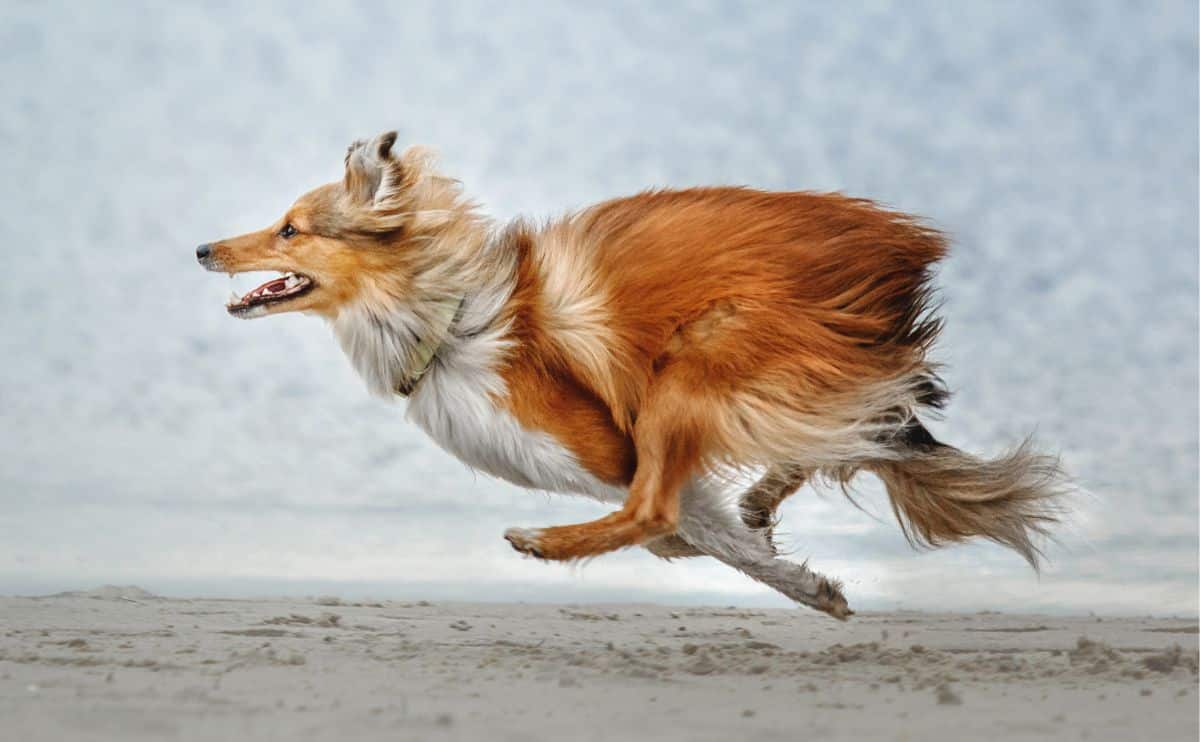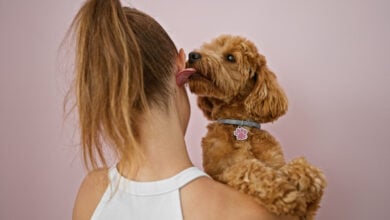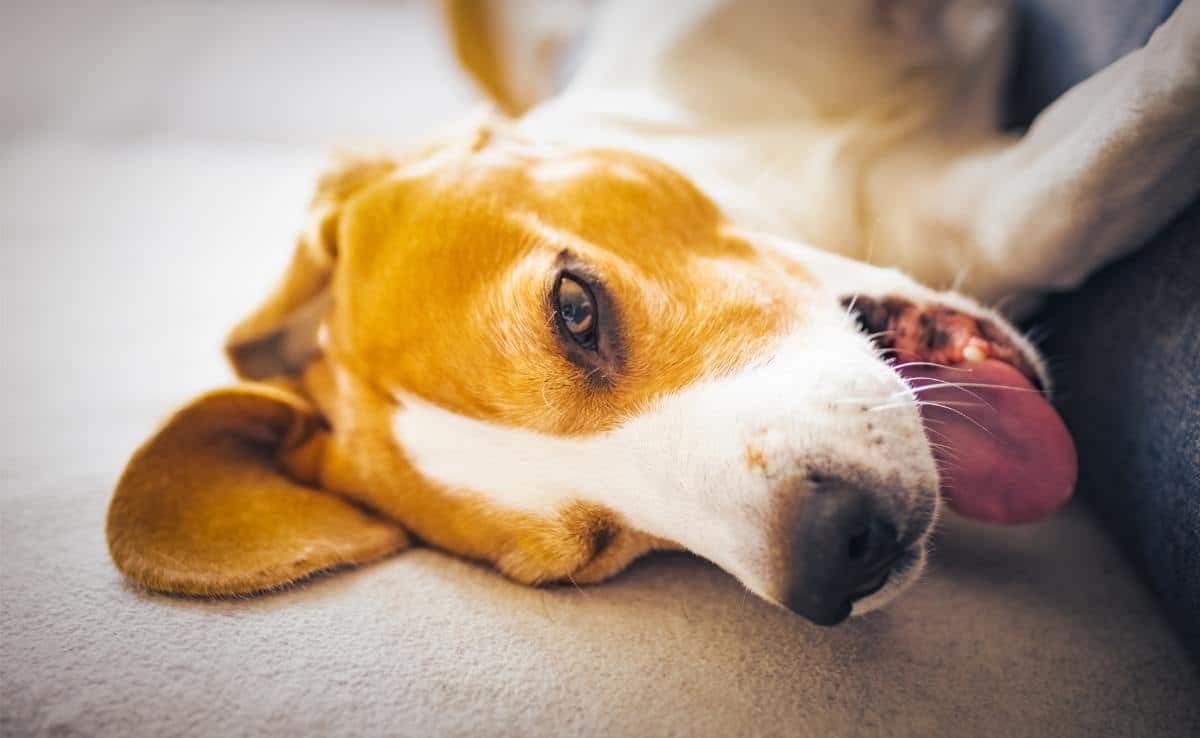The Poop Loop: Why Your Dog Must Spin Before They Go
When you purchase through links on our site, we may earn a commission. Here’s how it works.
Owning a dog is like living with a furry little mystery machine. Every day brings new questions. Why is he staring at the wall? Why does she bark at the toaster? And, most importantly, why does my dog spin like a possessed ballerina before taking a poop? Do all dogs circle before pooping, or is mine just obsessed?
Table of Contents
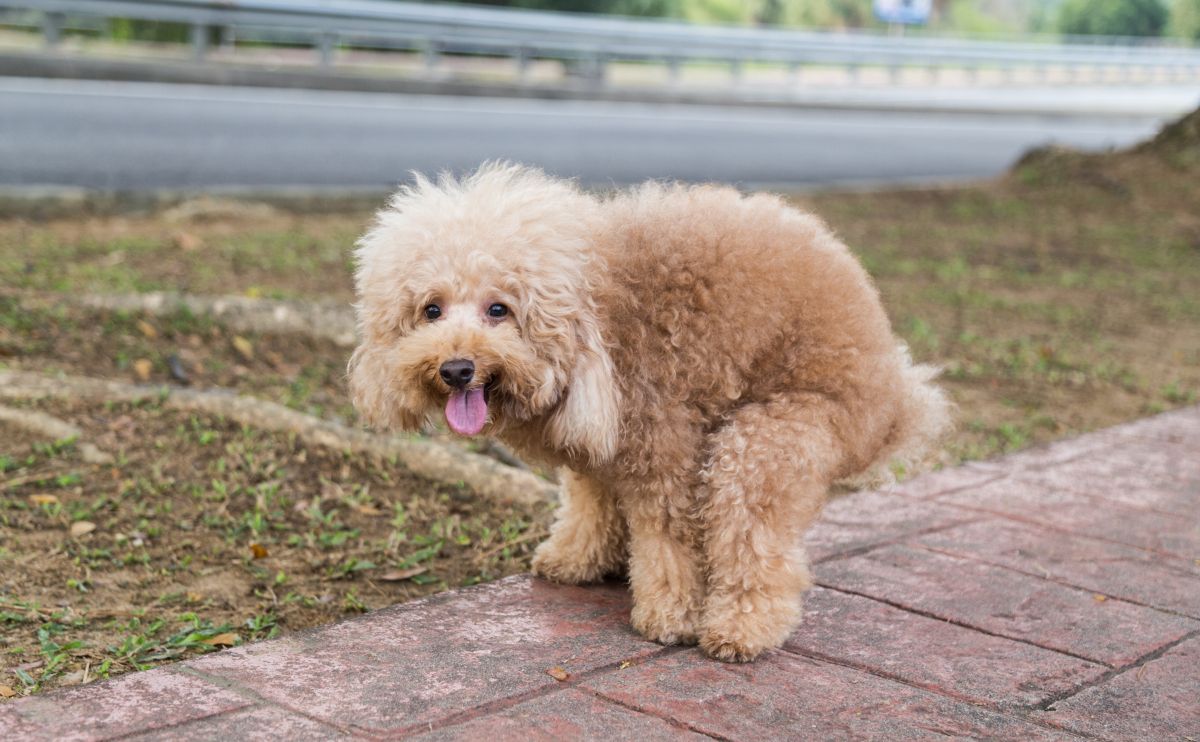
I’ve asked myself this countless times while walking in my neighborhood, leash in hand, watching my dog perform what looks like a sacred poop dance. It’s not just a quirky habit. There’s actually a method to the madness. Turns out, dogs have their reasons for this pre-poop pirouette, and they go beyond just finding the perfect spot to bless with their stinky business.
Clearly, something is going on here. But what? Is it instinct? A leftover survival tactic from their wolf ancestors? Or are dogs just messing with us for fun? Come along with me as I dive in and decode this mysterious, poop-prepping phenomenon.
Chronicles of the Canine Poop Ritual: A Personal Descent Into Madness and Curiosity
It’s a perfect morning. The sun is shining, birds are chirping, and Falkor, my four-legged, walk-obsessed best friend, is trotting happily by my side. Life is good. Peaceful, even. Then, it happens.
Falkor halts. His nose twitches. His ears perk up. He scans the horizon like he’s just spotted an enemy sniper. Something is coming. Something big.
Without any warning, he begins The Ritual.
One spin.
Two spins.
Three spins.
A dramatic pause. (Is he reconsidering? No. No, he is not.)
One final spin because perfection takes effort.
Only then does he assume the stance. Legs wide, tail lifted, eyes focused on something unseen in the distance, like he’s channeling the spirits of dogs past for guidance. And at last, Falkor bestows his gift upon the Earth.
Why? Why must my dog twirl like a possessed figure skater before answering nature’s call? Is it instinct? A ritual passed down through generations? Why must he spin like a malfunctioning Roomba before dropping the deuce? Not every dog does it, but enough do that people have started questioning if it’s a secret dog society rule.
I’ve owned seven dogs; only one didn’t partake in this ceremonial swirl. That outlier? A renegade, a rebel, a dog who scoffed at tradition. Meanwhile, my Chihuahua took it to a whole new level. She refused to do her business unless she had executed the perfect number of rotations. One time, she got interrupted mid-spin and refused to poop altogether, as if the ritual had been tainted beyond repair. Does your dog have weird poop behavior? I’d love to hear about it in the comments.
The Great Doggy Poop Dance: Why Do Dogs Spin Before They Drop the Deuce?
Ah, the age-old mystery: why do our beloved fur children engage in a dramatic, often ridiculous, spin session before answering nature’s call? Are they summoning the spirits of their ancestors? Conducting a secret poop ritual? Practicing for their big debut on Dancing with the Paws?
I’ll talk you through some of the reasons dogs circle before pooping, and believe me, there’s more to this peculiar behavior than just making humans giggle while waiting impatiently with a plastic bag in hand.
Instinct & Safety: The Ancient Art of Strategic Pooping
You may think your dog is just being dramatic when he spins 47 times before relieving himself, but there’s actually a primal, age-old reason behind the performance, and it’s not just to embarrass you in front of the neighbors or make you late to work.
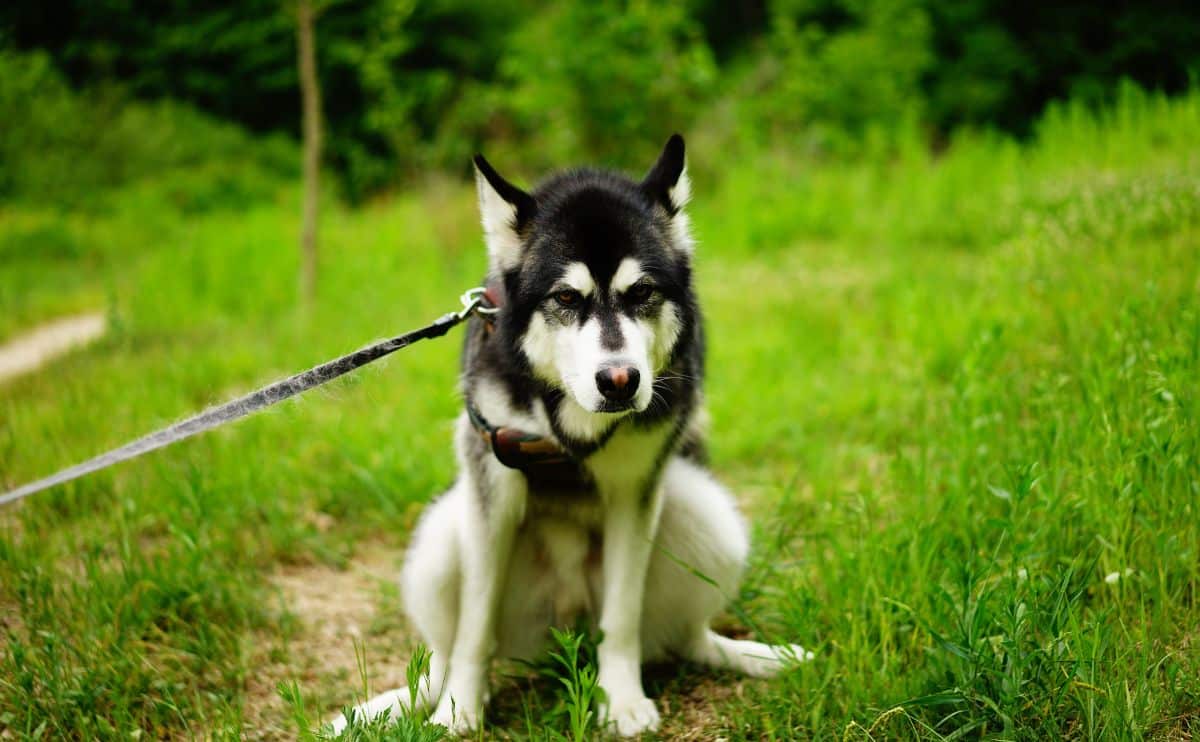
This behavior is deeply instinctual, coded into your dog’s DNA like a secret operating system left over from his wolfy ancestors. Back in the wild, squatting for a poop wasn’t just a private moment. It was a survival liability. Taking a dump in the wrong place could turn a peaceful potty break into a surprise predator ambush. Nothing ruins a morning like being eaten mid-defecation.
Sniffing Out the Scene
Before the deed is done, your dog becomes a four-legged crime scene investigator. As he circles, he’s reading the olfactory newspaper of the area and sniffing out everything from the scent of other dogs to the ghost of a raccoon that passed through three days ago. He’s basically saying, “Who was here? What were they doing? And is this spot poop-worthy, or is it a biohazard zone?”
They’re picking up clues like:
- Predator warning signs
- Other dogs’ poop graffiti
- Dead things (which, let’s be honest, dogs are weirdly into)
- Offensive smells (ironic, given what’s about to happen)
If something feels “off,” they’ll abort the mission and start the entire spin cycle all over again. When it comes to poop safety, there are no shortcuts.
Security First, Poop Second
When your dog squats, they’re in a highly vulnerable position: defenseless, pants-down, looking like a furry tripod. In this moment, your dog is trusting the universe (and you) to have their back. Circling before committing is their version of checking every exit, bolting the doors, and turning on the security cameras before going to the bathroom.
Dogs will often align themselves facing a direction that feels safest. Sometimes, that’s facing a tree line; other times, it’s directly at you, as if to say, “If anything goes down, I’m counting on you to take the hit while I finish.” No pressure.
Clearing the Landing Zone
Another practical reason for all that spinning? Landscaping. Dogs don’t want to squat into a spiky stick, an ant pile, or a surprise puddle. By walking in circles, they’re flattening out tall grass, clearing away debris, and generally making sure the poop runway is clear for a touchdown. It’s a little like fluffing your pillows before sitting down, except, you know, with more sniffing and way more awkward eye contact.
And let’s not forget the poop-hating tagalongs, grass seeds, burrs, mystery leaves, all of which have a nasty habit of clinging to fur during “the process.” Spinning helps reduce the odds that your dog will end up with unwanted souvenirs stuck to their nether regions.
The next time your dog starts spinning like they’re trying to conjure up a storm, remember: they’re not being stubborn or stalling just to spite your schedule. They’re channeling thousands of years of finely tuned poop-survival instincts.
Let them spin. Let them assess. This is their moment, and they’re making sure it’s safe, secure, and butt-friendly.
Comfort: The Pursuit of the Perfect Poop Spot
Dogs don’t just poop anywhere. They don’t walk outside, pick the first patch of grass, and say, “Yep, perfect poop spot.” No. Our pups treat their bathroom experience like it’s a five-star spa retreat. They want comfort, peace, and maybe even a light breeze if the universe feels generous.
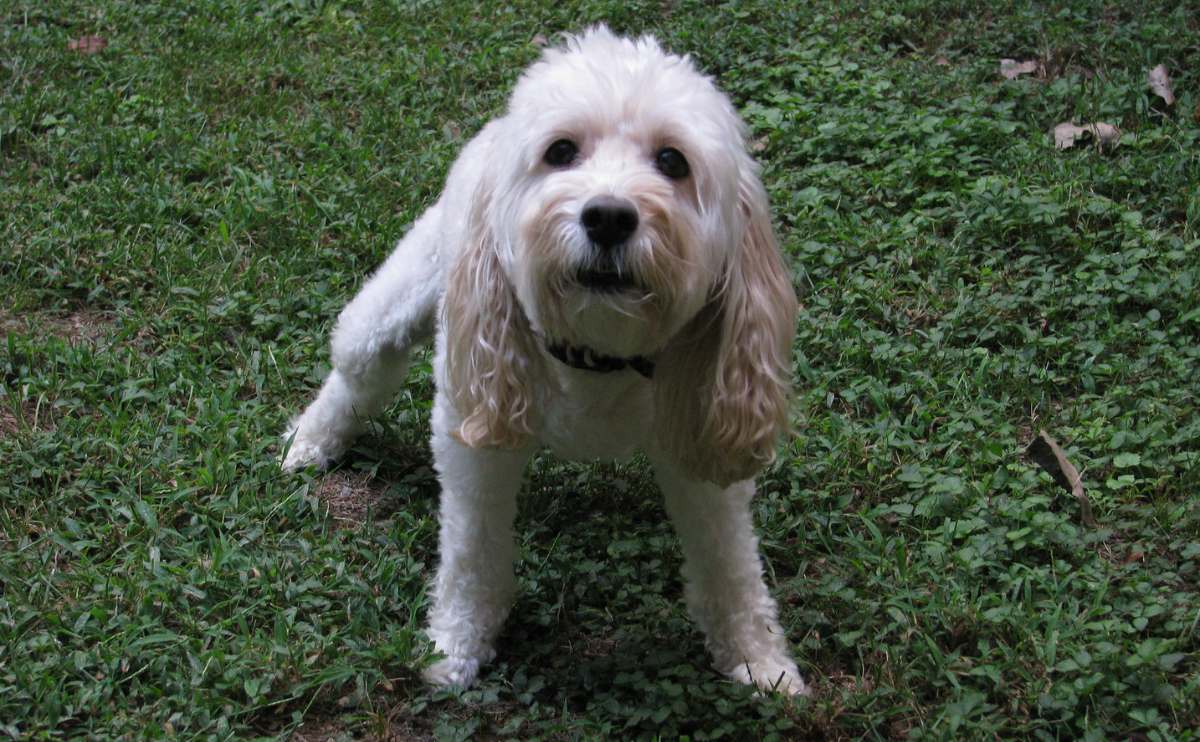
You’ve probably noticed that your dog also spins before lying down. That’s not a coincidence. Both routines follow the same logic. Whether settling in for a nap or preparing to drop a deuce, dogs want to ensure they’re comfy. Spinning allows them to prep the area and transform it into a cozy, obstacle-free zone.
Let’s face it: nature doesn’t come with cushions. Dogs poop outside, and that means they’re dealing with grass, twigs, pinecones, rocks, clumps of dirt, and whatever else the backyard throws at them. Imagine trying to sit on a stick while doing your business. That’s the level of betrayal your dog is trying to avoid. Spinning lets them detect and eliminate those discomforts before squatting becomes a risky game of “What just poked me?”
Spinning also helps chase away bugs or tiny critters that might be loitering too close for comfort. Nobody wants an unexpected ant encounter during a poop session. Your dog knows this. He sees a beetle near the target zone and thinks, “Nope, not today,” before launching into another rotation like a furry tornado.
Comfort matters. Spinning is the final quality control check for your pup before fully committing to the moment. So, if your dog spends a suspiciously long time circling before doing the deed, don’t rush them. They’re not wasting time. They’re curating the perfect experience.
Moving Things Along: The Spin That Starts the Show
Let’s be honest: sometimes, your dog’s pre-poop spin looks less like a search for the perfect patch of grass and more like a weird little warm-up. That’s because, according to some theories, it is a warm-up.
Some animal behaviorists and veterinarians believe this circling motion does more than just prep the terrain or sniff for danger. It might actually serve as a gentle form of internal stimulation that helps kick the digestive system into gear. Think of it like your dog doing a few light stretches before the big event, minus the yoga mat.
The Doggy Digestive Shuffle
Some schools of thought believe the circling motions help stimulate digestion. This theory believes the motion stimulates the intestines to have a bowel movement. This can be helpful, especially if a pup has constipation.
The theory goes like this: the repetitive motion of walking in circles may increase abdominal pressure, and the gastrointestinal tract may be lightly massaged. This physical movement could help encourage peristalsis, which is the wave-like muscle contraction that moves stool through the intestines. In other words, when your dog circles, they might be coaxing their bowels into action, helping “move things along” toward a successful outcome.
Veterinary sources like the American Kennel Club (AKC) note that dogs often engage in a variety of pre-poop behaviors, including sniffing, scratching, and, yes, circling, as part of a natural preparation process. While there’s limited formal research specifically proving that spinning jumpstarts digestion, observational evidence and veterinary consensus both support the idea that this behavior may assist dogs who need a little extra help getting things going, especially when they’re dealing with minor constipation.
A Natural Solution for a Sticky Situation
If your dog feels a little backed up, circling might bring some comfort and even a little physical relief. It’s their version of doing squats in the bathroom stall while muttering, “C’mon, let’s go.” You might laugh, but this ritual might provide just enough motion to trigger the urge to go for a dog who hasn’t had a bowel movement in a while.
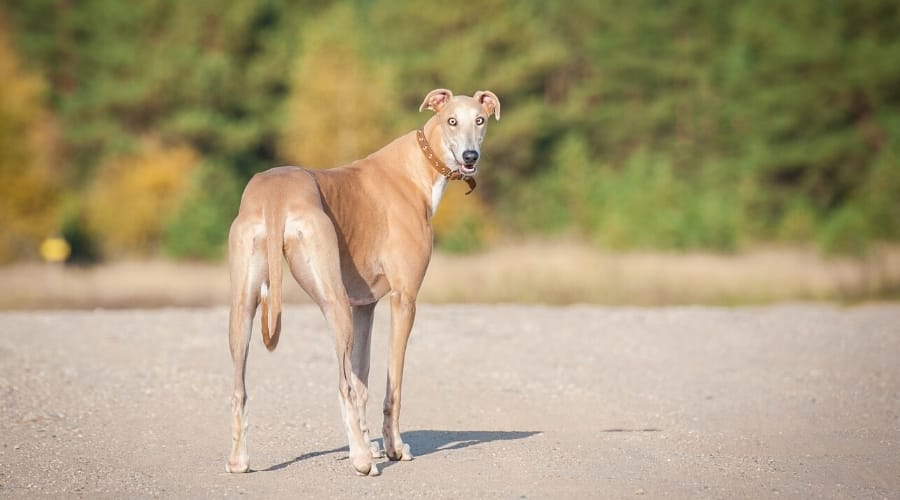
In some cases, veterinarians will even recommend light physical activity to dogs with mild constipation, like walking. Movement helps stimulate digestion in general, and for many dogs, circling before pooping seems to be their way of combining exercise with preparation. For my dog, a quick game of fetch usually does the trick. You can learn more about how to get things going if your dog won’t poop in this vet-written guide.
Constipation can be caused by diet. It can also result from pups ingesting things like bits of wood, dirt, plants, and even household items. Constipation may also result from too much or too little food in a pup’s diet. Sometimes, the wrong food, which is too high in carbs and fiber, is hard to digest, and multiple proteins can lead to digestive upset and issues like constipation.
Marking Territory: A Stinky Signature
When your dog spins before pooping, they’re not just finding the perfect angle or flattening grass. They’re also preparing to leave behind a little something extra: their very own chemical calling card.
Dogs have anal glands; these are tiny but mighty scent glands located just inside their rectum, one on each side like the world’s worst-smelling bookends. These glands release a unique scent when your dog poops, basically shouting to the animal kingdom, “I was here. This is my spot. Move along.”
If poop were a business card, the anal gland secretion would be the logo, home address, and fingerprint. All rolled into one disturbingly potent scent cocktail.
The Scent Olympics
Dogs have a sense of smell that’s estimated to be up to 100,000 times stronger than ours, so while you might think your pup is just spinning in circles like a furry weirdo, they’re actually engaging in a complex olfactory chess match.
They sniff out who’s been there before, what kind of dog, their mood, what they ate, and probably their political beliefs. Then, by pooping (and giving those glands a little squeeze), your dog adds their own “note to the neighborhood bulletin board.”
Spinning may help them find a high-traffic area or the exact spot another dog marked so they can properly assert dominance with a poop-based rebuttal.
Anal Glands: Small Sacs, Big Drama
Now, let’s talk about those anal glands themselves because they’re gross but functional when they work. What about when they don’t work? That’s when things get… smelly. And itchy. And it’s a little bit horrifying.
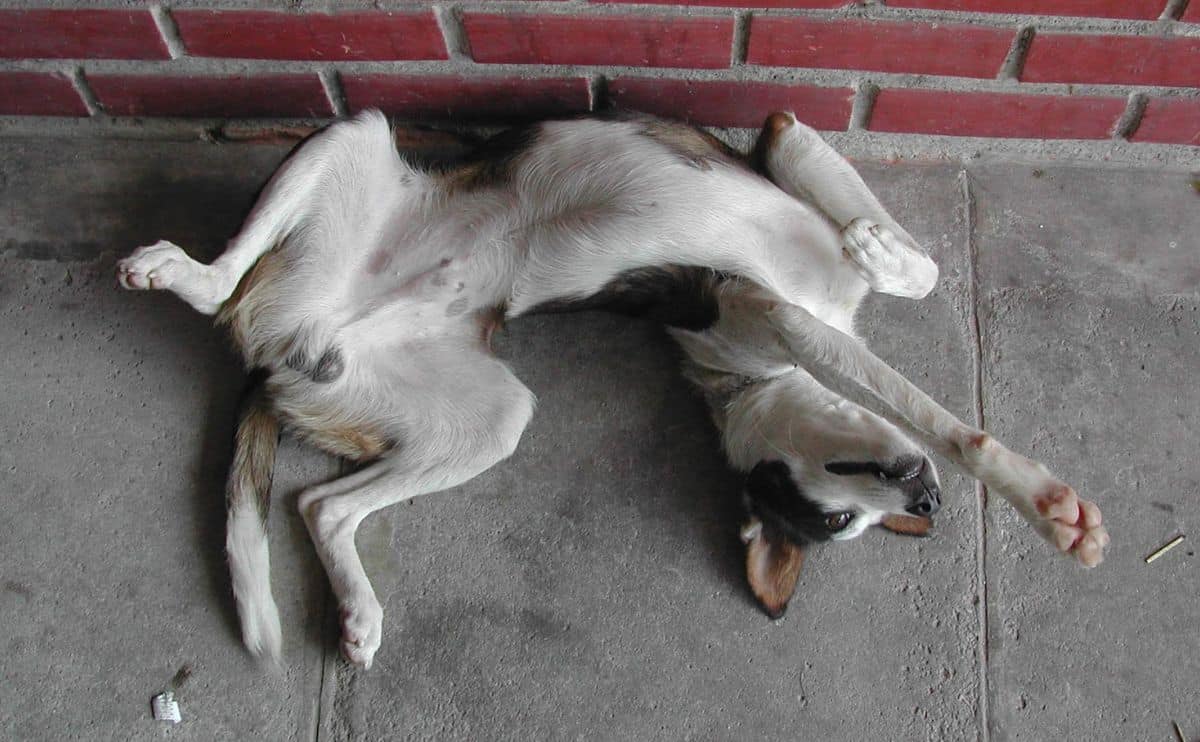
When functioning normally, these glands express themselves naturally when your dog poops. But if they get blocked, inflamed, or infected, they become uncomfortable little pressure bombs that turn your sweet pup into a butt-scooting menace.
Signs Your Dog’s Glands Are Mad at You:
- Scooting across your carpet like it’s a Slip ’N Slide
- Constant licking or chewing at their behind
- Straining or crying while pooping
- Swelling, redness, or foul odors around the anus
- Blood or pus in their poop or around the back end
If your dog suddenly starts acting like their butt is on fire, you may be dealing with impacted or infected anal glands. It’s not their fault. These things can happen due to obesity, poor diet, food allergies, chronic skin conditions, or plain old genetics. Smaller breeds like Chihuahuas and Dachshunds are especially prone to these issues, but any dog can experience anal gland drama.
So… Now What?
If your dog’s anal glands are causing problems, it’s time to call in the pros. Your veterinarian can check for impaction or infection and relieve the pressure (literally). In some cases, they’ll teach you how to express the glands at home. Yes, you heard that right. There’s a chance you may one day find yourself gently squeezing your dog’s butt juice out in your kitchen. Welcome to the glamorous side of pet ownership.
For ongoing issues, your vet may recommend a dietary change with more fiber, allergy management, or regular anal gland expressions to keep things flowing smoothly. Don’t ignore the signs. When anal glands get infected, they can rupture, and no one wants to deal with a poopsplosion with bonus pus.
The next time your pup spins like a caffeinated tornado before pooping, remember: it’s not just about comfort or survival. It’s also about reputation. They’re laying down their personal stink stamp for all the neighborhood dogs to read. And those little glands? They’re working overtime to make sure it’s signed, sealed, and… delivered.
Our Personal Experience With Anal Gland Issues In Dogs
Georgie, my male Cavalier King Charles Spaniel puppy, had ruptured anal glands twice, and he didn’t show any symptoms of scootching or licking until it was too late. The first time he wouldn’t stop biting his leg and butt area, and upon further inspection, we noticed a large, hard lump near his anus. We took him to the emergency vet, where they performed minor surgery to cut open the anal gland to remove the excess fluid and relieve the swollen area.
The second time, the glands ruptured on their own, and there was a lot of bleeding around his bum and tail. We took him to the vet immediately, and they shaved the hair around the groins and cleaned out the infected gland with an alcohol-based cleaning solution. The vet also removed any excess fluid that was inside his glands. In each case, the vet prescribed pain medication and antibiotics to prevent further infection. They also recommend using a wet, warm compress to help with swelling and a follow-up visit with his regular vet within a week to ensure the area is healing correctly.”
– Sadie Cornelius, Dog Mom, Canine Journal Creative & Marketing
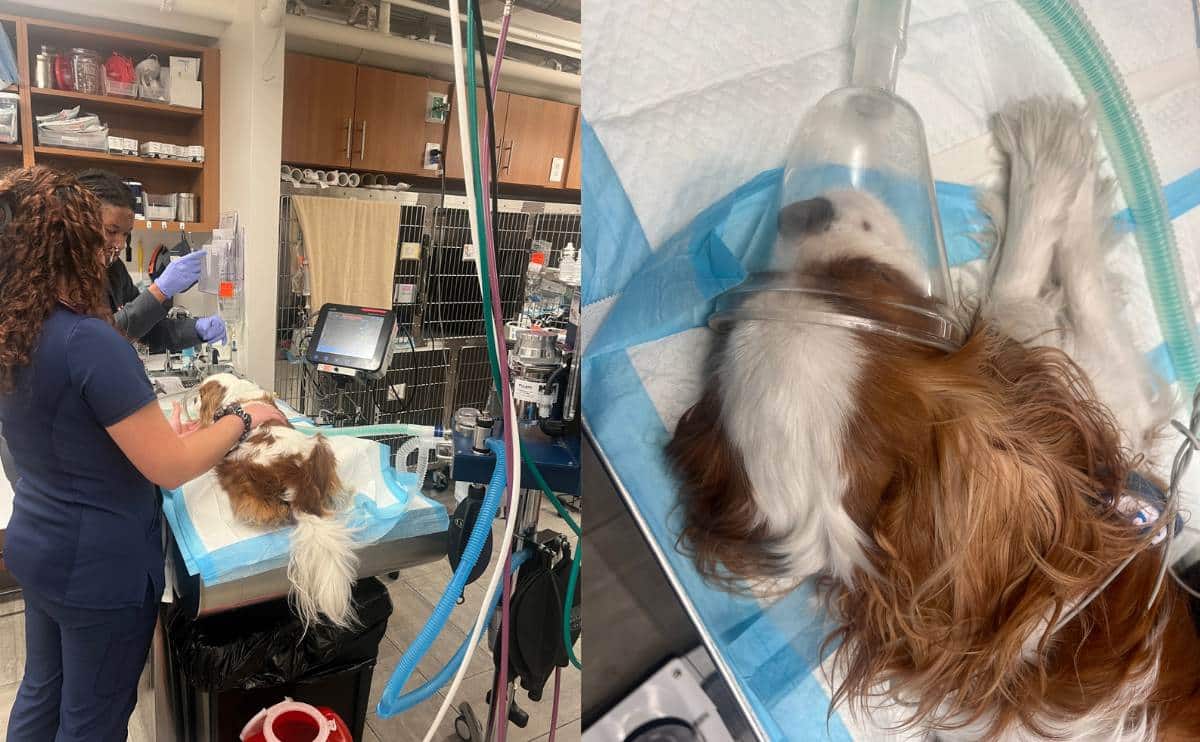
Dog Spinning on His Bottom: When the Booty Boogie Means Trouble
At first glance, you might think your dog is just being quirky or maybe trying out for a canine breakdancing competition. You see them doing a few circles, and then, suddenly, they drop their butt to the ground and scoot like they’re racing an invisible enemy across your freshly vacuumed carpet.
While it might look kind of funny (and okay, yes, it is a little funny), scooting and spinning directly on their rear is often a cry for help from your dog’s most sensitive and least glamorous body part.
When Circles Become Scoots
Typically, a little pre-poop spinning is just part of the ritual: sniff, spin, squat, success. But if your dog starts dragging their butt or doing tight little spins on their behind before or after pooping, they’re not just being dramatic. Something down there isn’t feeling right.
This behavior could signal:
- Anal gland issues (swollen, itchy, or impacted glands)
- Dermatitis or skin irritation around the anus
- Impacted hair or debris (especially in long-haired breeds)
- Rectal discomfort or infection
- Worms (particularly tapeworms, gross but treatable)
- Anal gland abscess or even tumors in more serious cases
If your dog has a furry butt that doesn’t get regularly trimmed, those clumped or matted hairs around the rear can turn into a painful poop trap. It’s like trying to go to the bathroom with Velcro underwear, and it’s going to end in chaos.
What to Watch For (Besides the Scoot Show)
Your dog may be trying to relieve discomfort or itchiness, but they don’t have hands, so they use the next best thing: your floor. If you notice your dog scooting or doing frequent spin-scoot combos, check for other red flags:
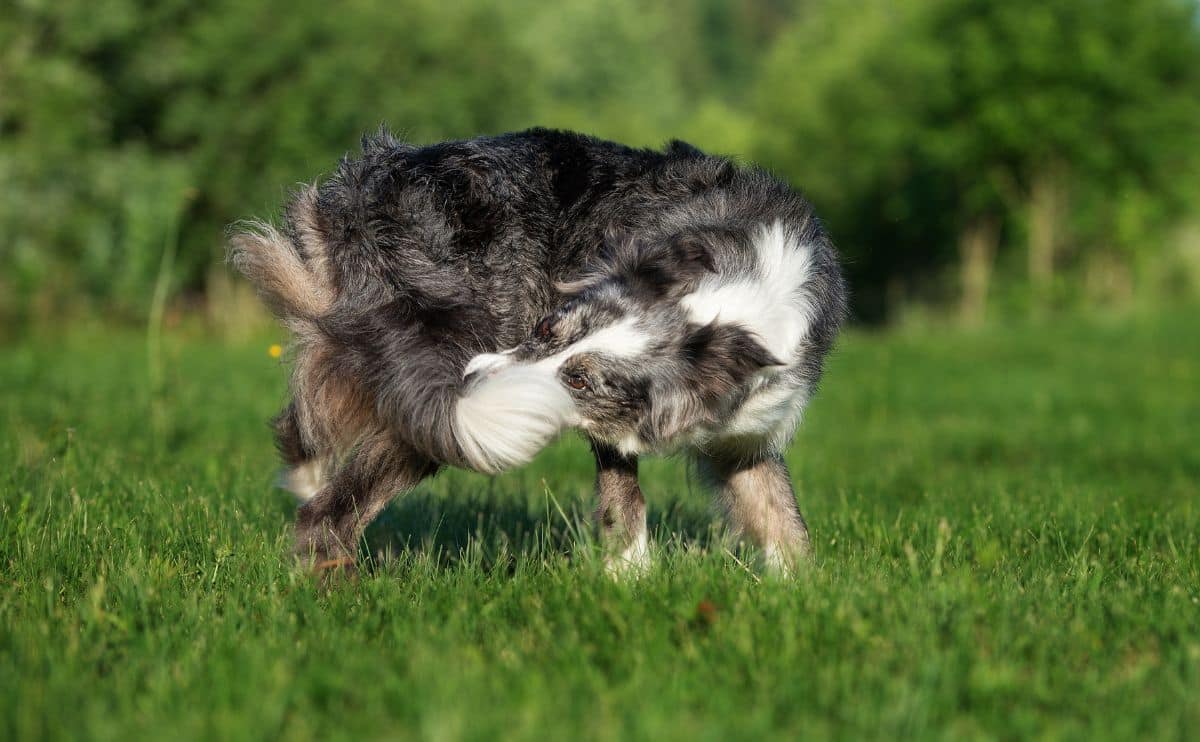
- Straining to poop
- Redness or swelling around the rear
- Licking or biting at their butt constantly
- A strong fishy smell (yep, that’s probably anal gland fluid, lucky you!)
- Visible pus, blood, or worms in or near the poop
Why It’s a Big Deal
The rear end is a high-traffic area with a lot of delicate stuff packed into a very small space. When something’s wrong, it can escalate fast. That innocent-looking scoot can quickly turn into a ruptured anal gland, a severe infection, or a painful abscess if you ignore it for too long.
Also, you know what’s not fun? Trying to explain to guests why your dog just wiped their butt across your area rug like it was a giant napkin.
When to Call the Veterinarian
If your dog keeps spinning on their bottom, or if they’re showing other signs of distress during bathroom breaks, contact your vet sooner rather than later. They can check for impacted glands, infections, parasites, or other underlying issues and get your pup back to pooping (and sitting) comfortably. And yes, this might include your vet showing you how to express anal glands manually, something that sounds like a fun science experiment but will haunt your dreams if you try it without proper training.
Bottom line: If your dog starts doing the booty scoot boogie, take it seriously. It may look like comedy gold, but your pup might be dealing with some not-so-funny discomfort. Their butt is trying to tell you something. Listen before it escalates into a full-blown rear-end rebellion.
Consider Pet Insurance
Vet bills aren’t cheap; even a routine visit can become a financial facepalm. That’s why having pet insurance, or at least a dedicated savings stash, is one of the smartest things you can do as a dog parent. A good policy gives you peace of mind and lets you focus on your pup’s health, not your wallet, especially if a chronic issue happens later. Learn more about pet insurance and what it covers in our detailed guide.
Strange But True: Weird Dog Poop Theories You Didn’t Know You Needed
Think your dog’s poop routine is just about finding the right patch of grass? Think again. From magnetic fields to full moon madness, these bizarre theories prove your pup’s bathroom habits might be more mystical than you ever imagined. Welcome to the weirdest corner of canine behavior. You’ll never look at a poop walk the same way again.
Do Dogs Poop Facing North? The Compass-Driven Canine Conspiracy
If you’ve ever watched your dog do an endless series of slow, confused rotations before finally deciding where to poop, you might have assumed they were just being picky. But what if, stick with me here, they were actually trying to align with the Earth’s magnetic field? Yep. We’re going full Animal Planet meets The X-Files.

There’s a popular theory floating around in the dog-nerd world that suggests dogs prefer to poop while facing a North-South axis. That’s right. Your dog might be more in tune with the Earth’s magnetic field than your smartphone. And possibly your GPS. But it’s not just a tinfoil-hat idea. This theory actually has science behind it.
The Study That Sniffed Out the Truth
In 2014, researchers from the Czech Republic and Germany conducted a surprisingly detailed (and weirdly impressive) study published in Frontiers in Zoology. Over two years, they observed 70 dogs from 37 different breeds and recorded a grand total of 5,582 urinations and 1,893 defecations.
Yes, people went to college, got PhDs, and then watched dogs poop for science. Heroes, truly.
What they found was oddly specific and totally fascinating: when the Earth’s magnetic field was calm, the dogs showed a strong preference for pooping while facing North or South. Not East. Not West. Definitely not diagonally. Just good ol’ cardinal up and down.
Interestingly, this behavior disappeared when the magnetic field was in flux, which it often is. According to the researchers, the field is only “calm” about 20% of the time during daylight hours. So your dog might only get to experience peak magnetic poop vibes a few times a day.
It’s Not Just Dogs Doing It
Dogs aren’t the only ones getting magnetic while they poop. Other animals, like red foxes, roe deer, coyotes, wolves, and even cows, also appear to prefer aligning themselves with the magnetic field during their most vulnerable moments.
Imagine an entire field of cows silently syncing up their bowel movements with the poles of the Earth like it’s some kind of poop-powered ritual. Honestly? That’s beautiful.
Do Dogs Line Up On a Magnetic Field When They Poop?
The answer appears to be yes, but only when the universe cooperates.
This strange but compelling phenomenon is rooted in something called magnetoreception. That’s the biological ability to sense the Earth’s magnetic field, a superpower shared by dogs, birds, turtles, amphibians, fish, and even some bugs.
Scientists still don’t fully understand how dogs do it, but the research suggests they can detect tiny shifts in magnetic polarity, influencing how they orient themselves during… well, bathroom time.
When your dog is spinning and sniffing and clearly overthinking things, they might actually be responding to changes in the geomagnetic field, like tiny, furry compasses trying to lock onto True North.
Why Would a Dog Care About Magnetic Alignment?
Honestly? We still don’t know. Some people believe dogs may align themselves with magnetic fields because it gives them a sense of balance, direction, or calm in unfamiliar or open spaces. Others theorize that facing North or South helps them track time or keep their internal biological rhythms in sync.
Or maybe it just feels good. Who among us hasn’t needed a minute to line things up before committing to a big decision? The next time you’re stuck standing in the yard watching your dog spin like a wind-up toy, remember: they’re not stalling. They might just be tuning into the planet, syncing their chakras, and trying to drop a spiritually aligned deuce. Respect the ritual. The Earth demands it.
The “Poop Watcher” Theory: Why Is My Dog Making Eye Contact While Pooping?!
You’re standing in the yard, coffee in hand, when your dog squats to do their business, and suddenly, their eyes lock onto yours as if they’ve just uncovered a deep personal betrayal. The stare is intense. Unblinking. Borderline emotional.
At first, you might think, “Is my dog ashamed? Embarrassed? Trying to make this awkward for both of us?” But no, it’s not shame or guilt. It’s survival.
Dogs are genetically hardwired to be on alert while doing their business. Pooping leaves them exposed. Vulnerable. Mid-squat is not the ideal position for defending oneself against a surprise mountain lion attack. So what do they do? They assign you the role of lookout.
That weird eye contact is your pup silently saying:
“Hey, I’m defenseless here. Keep an eye out for threats. If anything comes charging out of those bushes, you scream and handle it while I finish what I started.”
According to animal behaviorists, this poop-staring contest is actually a sign of trust. Your dog depends on you to keep them safe during one of their most compromised moments. So, don’t feel uncomfortable the next time your dog stares into your soul mid-defecation. Feel honored. You’re their emergency poop security detail.
Know that if your dog locks eyes with you mid-poop, they’re not being weird. They’re appointing you Poop Sentinel in Chief. Wear the title proudly. And if you dare look away too soon? Prepare for the Poop Abort Sequence. They noticed. You failed your one job.
Frequently Asked Questions (Because Dogs Keep Us Guessing)
The reality of living with a dog means you constantly find yourself searching online for the answers to things like “Is this poop color normal?” or “Why is my dog spinning like a possessed Roomba?” You’re not alone. Here are the most common (and slightly bizarre) questions dog parents ask about their pups’ spinning and circling habits, along with answers that might surprise you. If I missed yours, let me know in the comments, or head over to the Canine Journal forum to chat with other dog owners and experts. You won’t believe the amount of weird behavior we’ve heard about!
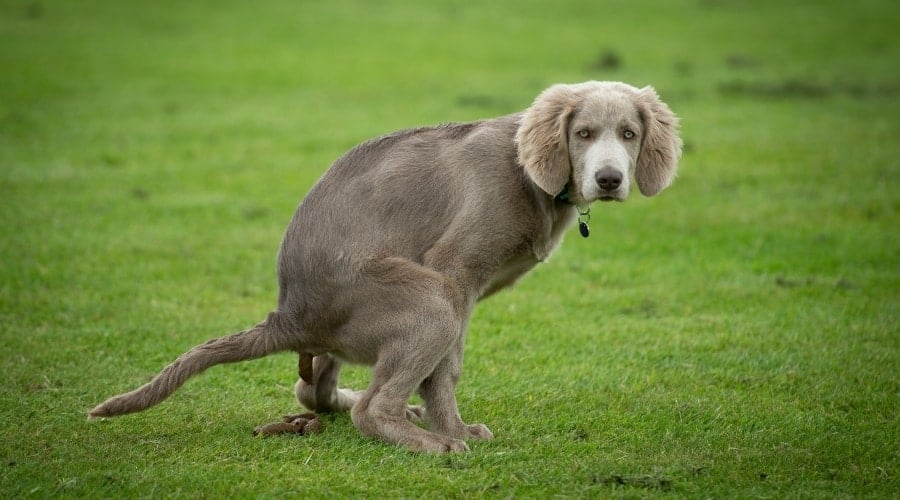
Why Does My Dog Spin Before Lying Down?
I used to think my dog was just being dramatic before bed, like, “Ooh, I simply must rotate three times before settling on this cushion!” But it turns out there’s logic behind the performance.
Dogs spin before they lie down for a lot of the same reasons they spin before pooping. It’s all about comfort, safety, and claiming the space with their scent. Back in the wild, this behavior helped them flatten the grass, scare off bugs, and make a safe little nest. Today, it helps them feel secure, even if the “grass” is your $300 memory foam dog bed.
Do Dogs Spin When Anxious?
Oh yes, they do. Spinning and pacing can indicate that your pup is feeling stressed or anxious, especially if it’s more frantic than the usual pre-poop pirouette.
Some dogs spin because of underlying issues like poor vision, hearing loss, confusion, or even neurological conditions. Others do it when they’re overwhelmed, overstimulated, or just plain uncomfortable. Anxiety might be the culprit if your dog suddenly develops a case of spinny-zoomies in stressful situations.
You can talk to your vet about calming strategies, including training, supplements, or even probiotics that help with stress. Yes, they make stress-reducing gut bacteria now. The future is weird and amazing.
Is Circling Before Pooping Normal?
Totally normal. Delightfully weird but normal. Not all dogs do it, but if yours does, they’re in good company. As long as there’s no straining, blood, or signs of distress, it’s just part of the grand ritual. If your pup seems uncomfortable or can’t go, it’s time to pay closer attention.
Also, if you’ve got a long-haired or fluffy dog, be sure to keep the fur around their butt trimmed. Nobody wants a poop-hair entanglement. That’s a cleanup horror show no one prepares you for.
Why Is My Dog Walking in Circles?
Now, this one is different from the classic pre-poop or bedtime swirl. If your dog starts walking in circles repeatedly, can’t stop, or seems disoriented while doing it, it might be something more serious.
In some cases, this kind of behavior points to neurological issues. It could be caused by trauma, a tumor, an inner ear condition, or even canine cognitive dysfunction. Basically, if your dog is doing laps and looks confused about it, you need to call your vet ASAP. They may recommend an MRI or complete a physical exam to figure out what’s going on.
Should I Be Worried About My Dog’s Spinning?
Most of the time, spinning and circling are completely normal. But if your dog seems uncomfortable, is struggling to go, or just isn’t acting like their usual butt-wiggling self, don’t wait. Get them checked out early. It’s always better to rule out issues like constipation, diet imbalances, or underlying health conditions before things escalate.
Also, remember that many poop-related problems stem from what your dog eats. Many digestive issues, including difficulty with defecation and urination, can be due to a poor or unbalanced diet. Consider trying fresh, human-grade dog food or tasty freeze-dried food if your pup’s tummy seems off. Sometimes, a little fiber, a better protein source, or vet-approved supplements make all the difference.
Unleashed: More Bizarre Dog Behavior That’ll Make You Question Everything
Just when you think you’ve got your dog figured out, they start barking at the fridge, spinning in reverse, or trying to eat a rock with the confidence of a Michelin-starred chef. One minute, they’re cuddled on the couch like a furry angel; the next, they stare at a corner as if it owes them money. Let’s not forget the sudden midnight zoomies, the obsession with licking the air, or the profoundly concerning decision to roll in the deadest thing within a 10-mile radius. Scientists call it instinctual behavior. I call it chaotic energy.
From obsessive tail wagging and head tilts that look like they understand complex human emotions to full-blown panic over a plastic bag, dogs are full of mysteries, and we are just lucky to witness them in action. And if your dog is rolling in poop or eating poop (yep, that’s a whole thing they even eat cat poop), you’ll definitely want to check out our guide on how to stop that behavior. Because love has limits, and yours might be “poop breath kisses at 7 a.m.
Why Trust Canine Journal?
Danielle has shared a special bond with dogs since childhood. She has over 30 years of experience with dogs of all sizes and dogs with special needs. Danielle is a dedicated professional researcher and pet product reviewer. She spends countless hours researching the latest pet care, health, food, and training developments to help owners learn what’s behind the label. Her two dogs, Daisy and Falkor, serve as in-house food and toy testers.
